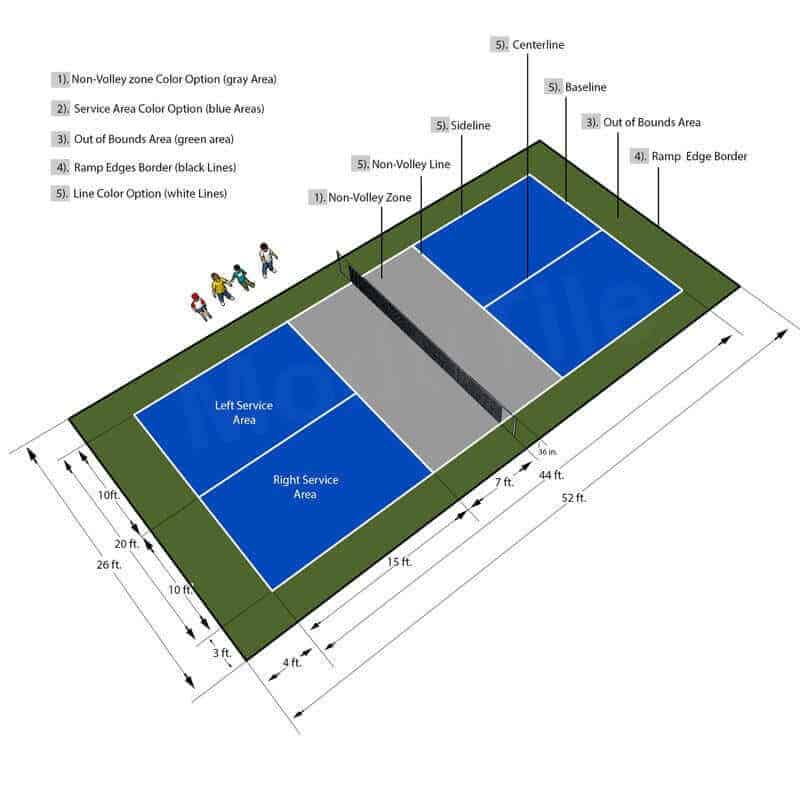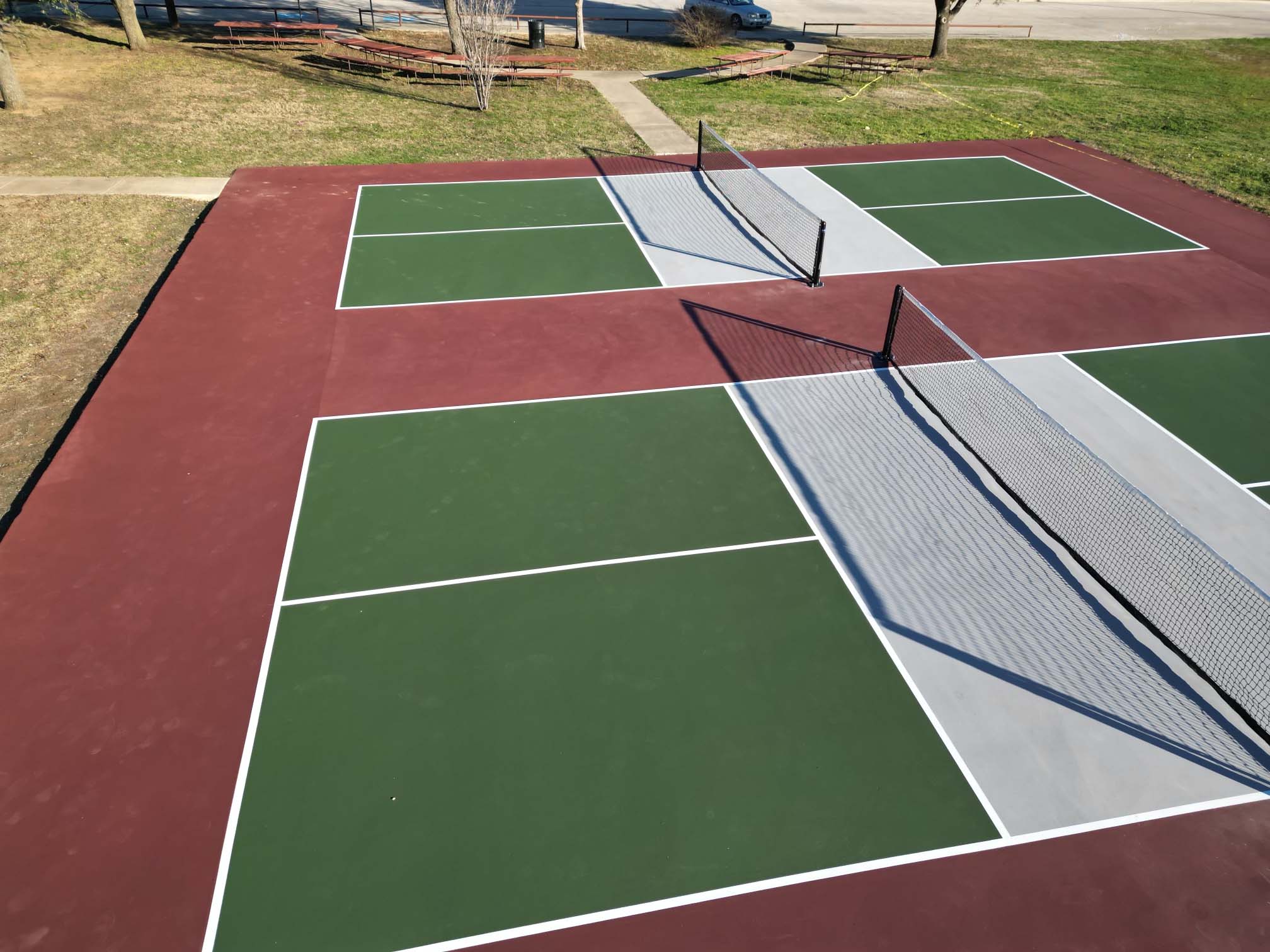Interior and Exterior Pickleball Court Construction Solutions
Interior and Exterior Pickleball Court Construction Solutions
Blog Article
Lasting Practices in Pickleball Court Building You Need To Know
As the appeal of pickleball proceeds to increase, so also does the need for lasting methods in court building and construction. The effect of these methods expands much past the court itself.
Choosing Eco-Friendly Products
Choosing environment-friendly materials is an essential action in the construction of sustainable pickleball courts. The selection of sustainable products not only reduces ecological impact yet additionally improves the long life and efficiency of the court. Key materials include recycled rubber for the surface, which offers superb toughness and shock absorption while drawing away waste from landfills.
Additionally, utilizing in your area sourced products lowers transport emissions and supports local economic situations. Pickleball court construction. Using native hardwoods for fencing and seats can give a sustainable aesthetic while making certain durability versus the elements.
Incorporating permeable materials for court structures can additionally add to sustainability by permitting all-natural water drain and decreasing runoff. These selections not just safeguard local ecological communities but likewise promote much healthier play atmospheres.
Efficient Drain Solutions
While the option of environment-friendly materials is necessary, implementing reliable water drainage remedies is just as essential for maintaining lasting pickleball courts. Proper drainage not only secures the court surface area from water damage however additionally minimizes erosion and runoff, promoting ecological honesty.
Effective drain systems can consist of permeable paving, which enables water to infiltrate the ground as opposed to pooling on the surface. This reduces the chance of standing water, which can bring about mold and mildew and various other upkeep issues. In addition, incorporating tactically put drain channels and swales can guide excess water far from the court location, making certain a completely dry having fun surface area and stopping soil disintegration.
Making use of indigenous plants in the landscaping around the courts can even more enhance drainage by absorbing excess water and reducing runoff. These plants call for much less irrigation and promote biodiversity, straightening with lasting methods.
Furthermore, it is crucial to frequently maintain the water drainage system to ensure its long-term performance. This consists of cleaning particles and tracking for clogs. By prioritizing effective drainage options, pickleball court builders can substantially contribute to the sustainability and durability of the facility, eventually profiting both gamers and the atmosphere.
Energy-Efficient Illumination Options
As the demand for pickleball continues to expand, integrating energy-efficient lighting choices right into court layout has come to be progressively vital for sustainability. Conventional illumination systems frequently take in too much power, adding to higher operational prices and environmental effect. Embracing contemporary, energy-efficient modern technologies is vital for both new buildings and restorations.
LED (Light Emitting Diode) illumination sticks out as a leading choice due to its longevity and power financial savings (Pickleball court construction). Contrasted to conventional lighting, LEDs use approximately 75% much less energy and can last up to 25 times much longer, substantially minimizing upkeep costs. The directional nature of LED illumination minimizes light air pollution, guaranteeing that lighting is concentrated on the court rather than bordering areas.

Sustainable Surface Area Alternatives
Exploring lasting surface area alternatives for pickleball courts has obtained traction among players and home builders alike. The focus on environmentally friendly materials not only lines up blog with the growing ecological recognition but also enhances the performance and longevity of the courts.
This material provides superb shock absorption, minimizing the danger of injuries for players while advertising sustainability. These ceramic tiles are simple to install and change, and their convenience allows for numerous court arrangements.
All-natural lawn courts are also arising as a sustainable option, advertising biodiversity and minimizing the heat island impact. However, they require normal upkeep and visit this page water, which may not line up with all sustainability objectives.

Water Preservation Strategies

One more effective strategy includes the installation of rainwater harvesting systems. These systems collect and save rain for use in keeping court surfaces and landscape design. This method not just saves potable water yet also lowers reliance on metropolitan sources.
Moreover, employing drought-resistant landscape design around the courts is vital. Indigenous plants call for less water and are better adjusted to local environment conditions, thus reducing total water intake. Additionally, making use of efficient watering systems, such as drip irrigation, makes sure that water is supplied directly to plant origins, minimizing evaporation and waste.
Final Thought
Incorporating lasting practices in pickleball court building and construction considerably adds to ecological conservation and resource efficiency. Using eco-friendly materials, executing efficient drain solutions, and adopting energy-efficient illumination options can considerably minimize environmental effect. In addition, discovering lasting surface area options and utilizing water conservation strategies improve the overall sustainability of these recreational centers - Pickleball court construction. By focusing on these methods, the construction of pickleball courts can align with more comprehensive ecological goals while promoting longevity and capability within neighborhoods.
As the popularity of pickleball proceeds to rise, so too does the requirement for lasting practices in court building.Choosing environment-friendly products is an essential step in the building of lasting pickleball courts. review By focusing on energy-efficient lights alternatives, pickleball court fabricators can contribute to an extra lasting future while satisfying the demands of players and stakeholders alike.Integrating sustainable surface alternatives not just boosts the efficiency of pickleball courts however also leads the means for applying reliable water conservation techniques.Incorporating sustainable techniques in pickleball court construction considerably contributes to ecological conservation and resource efficiency.
Report this page